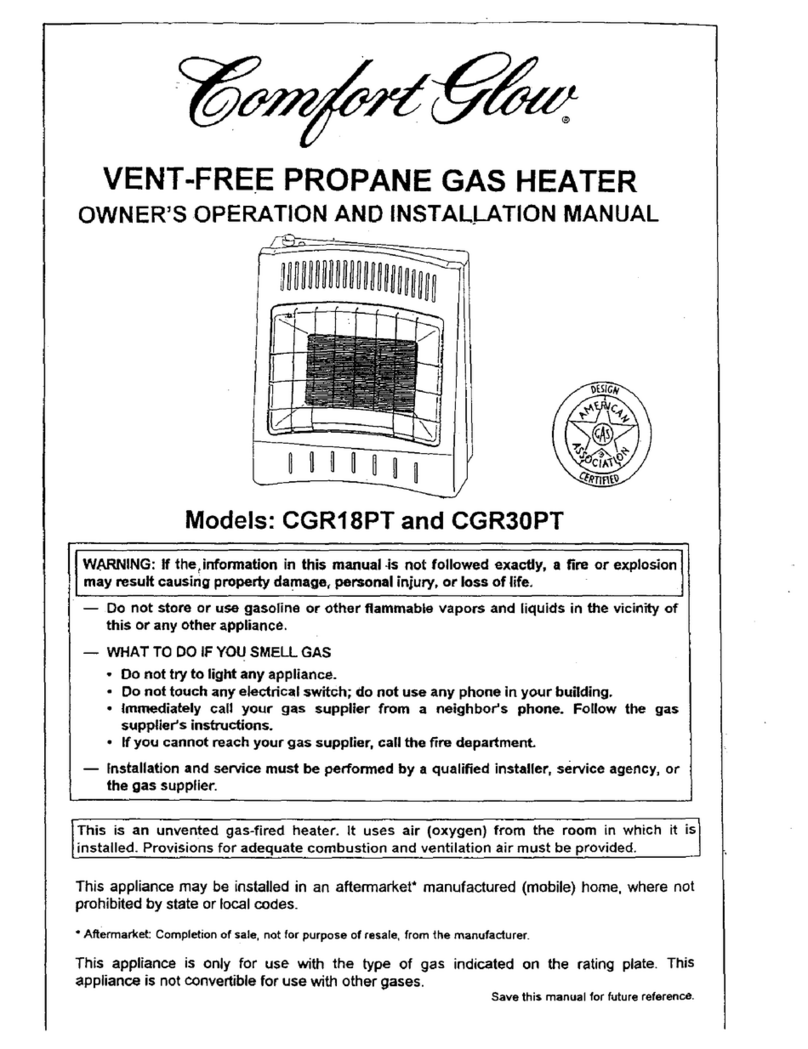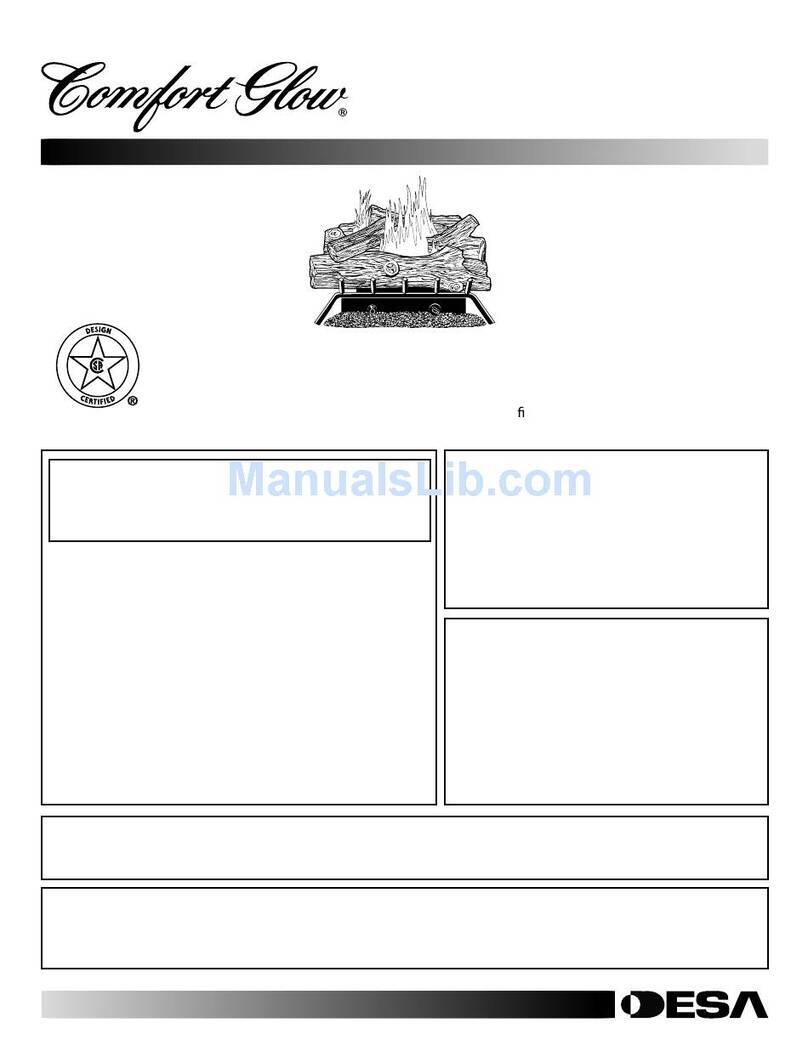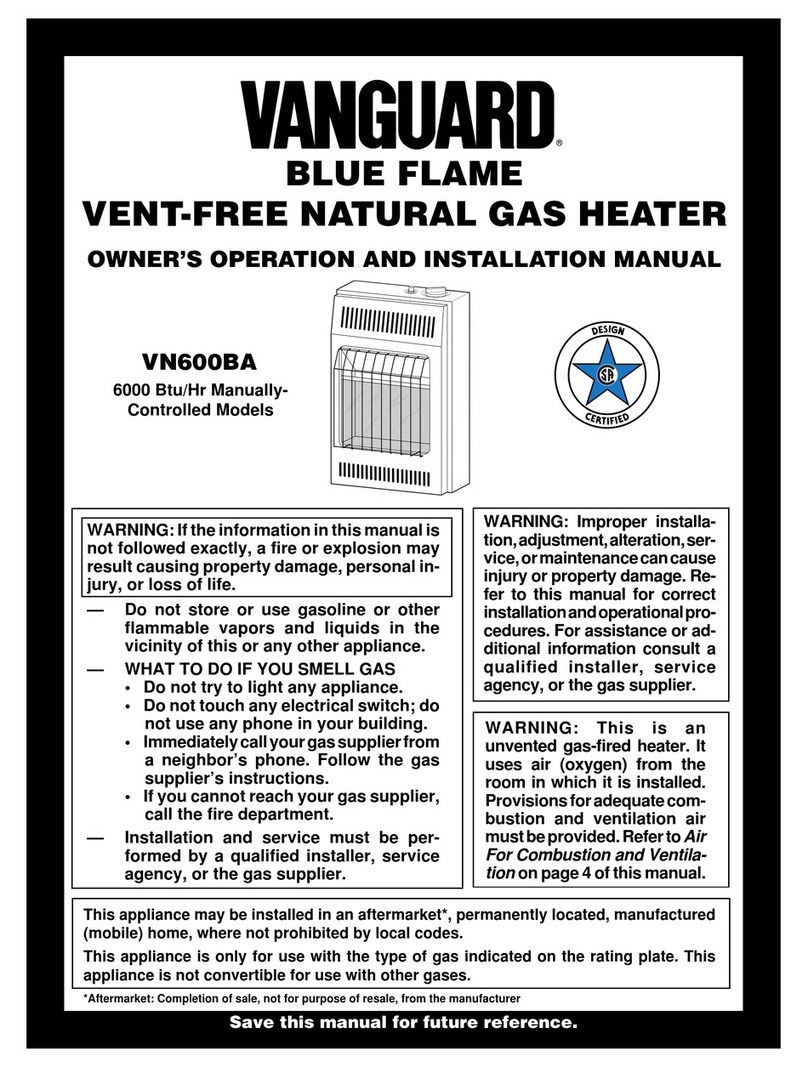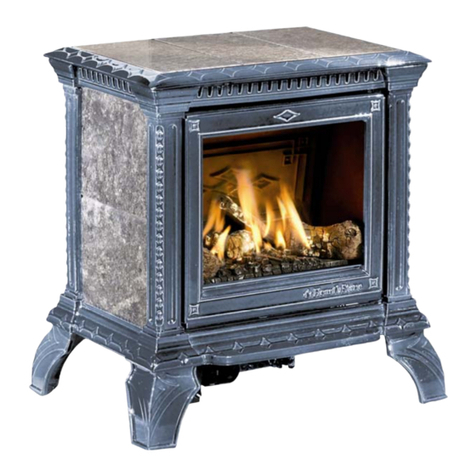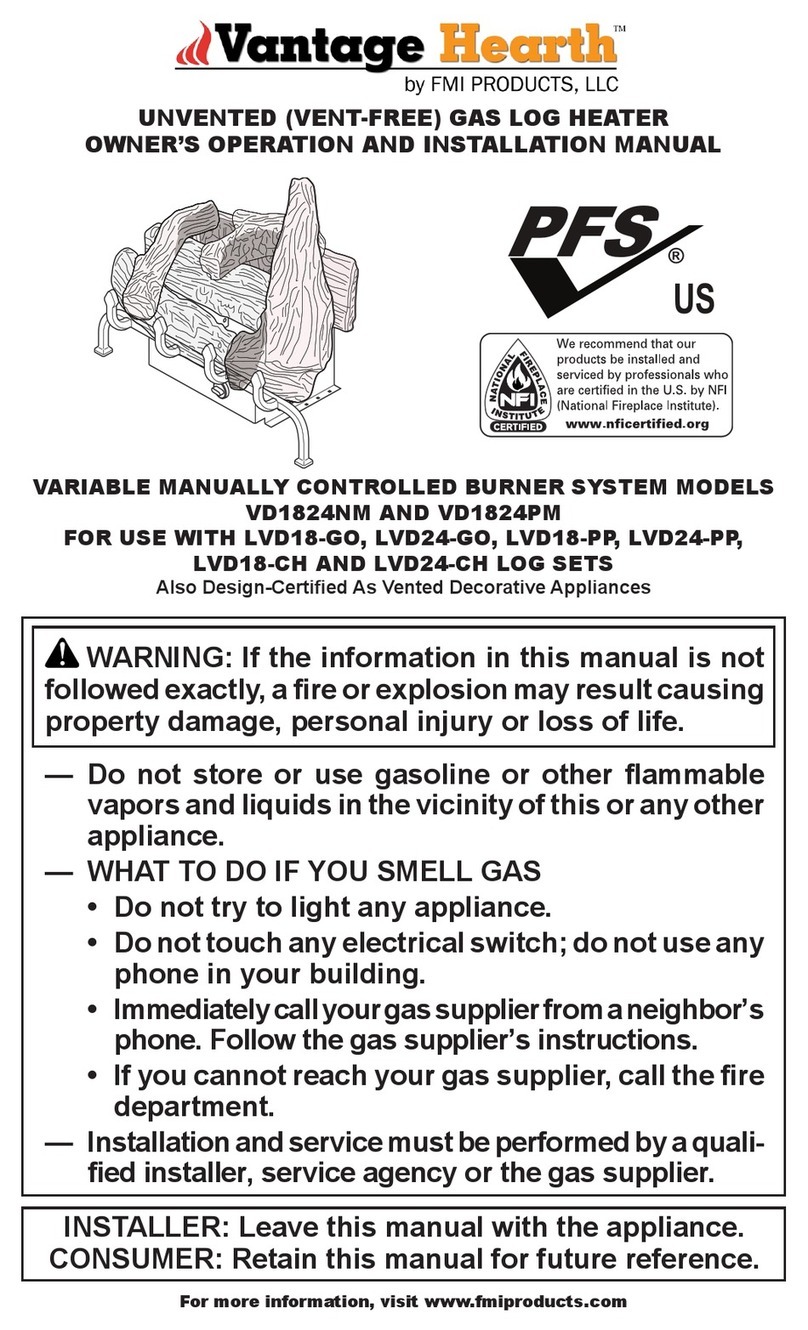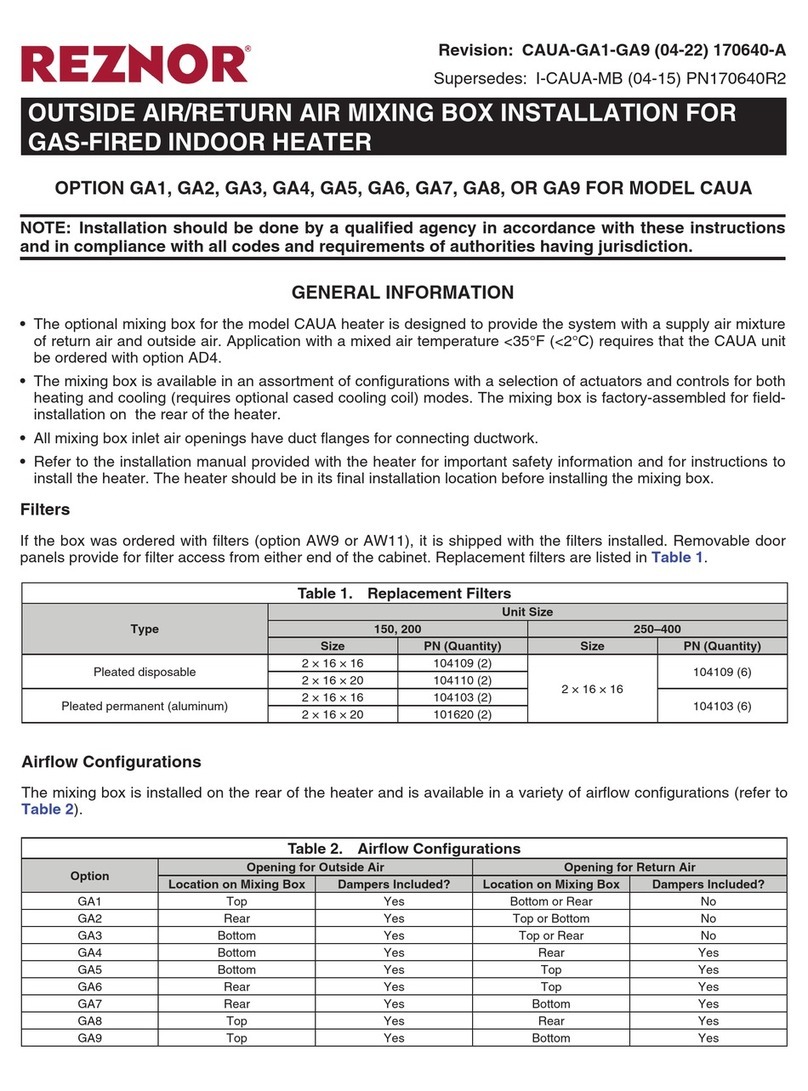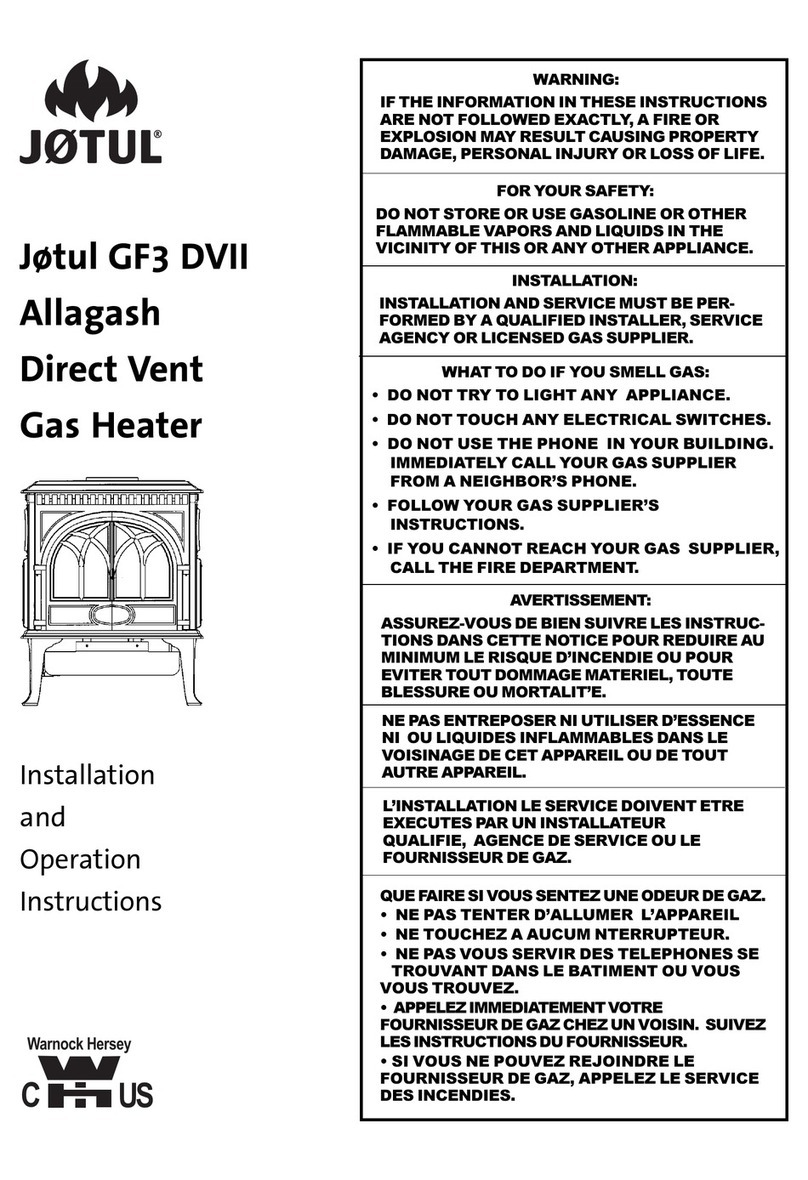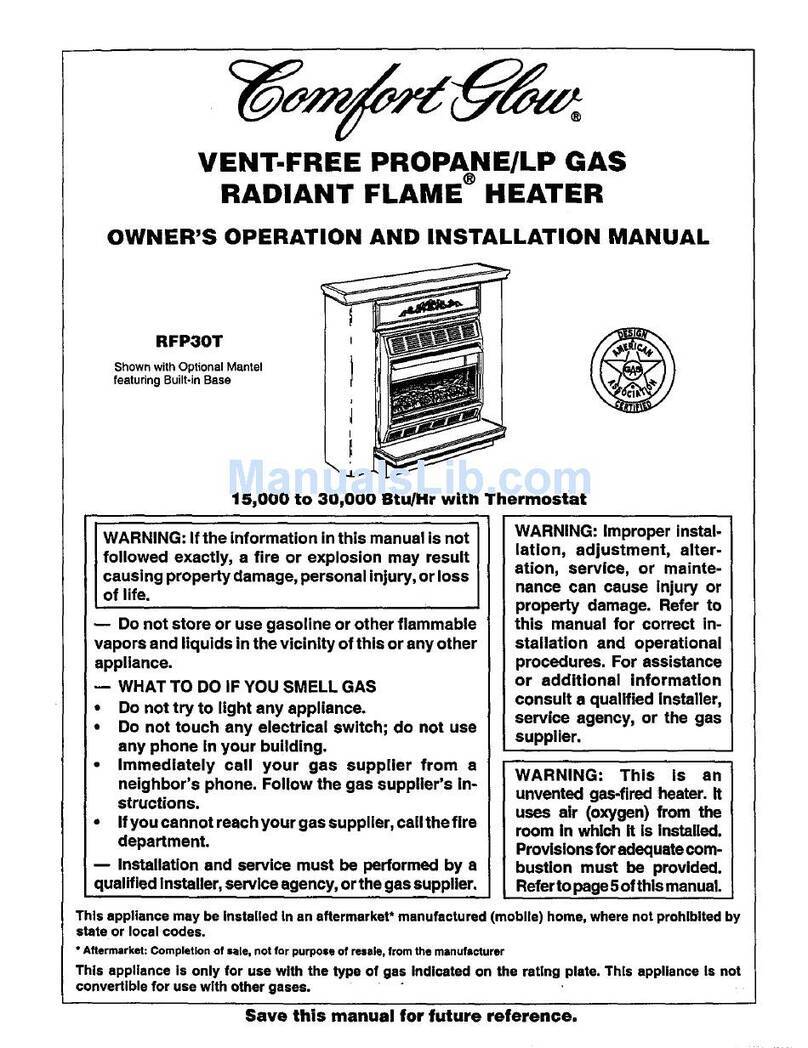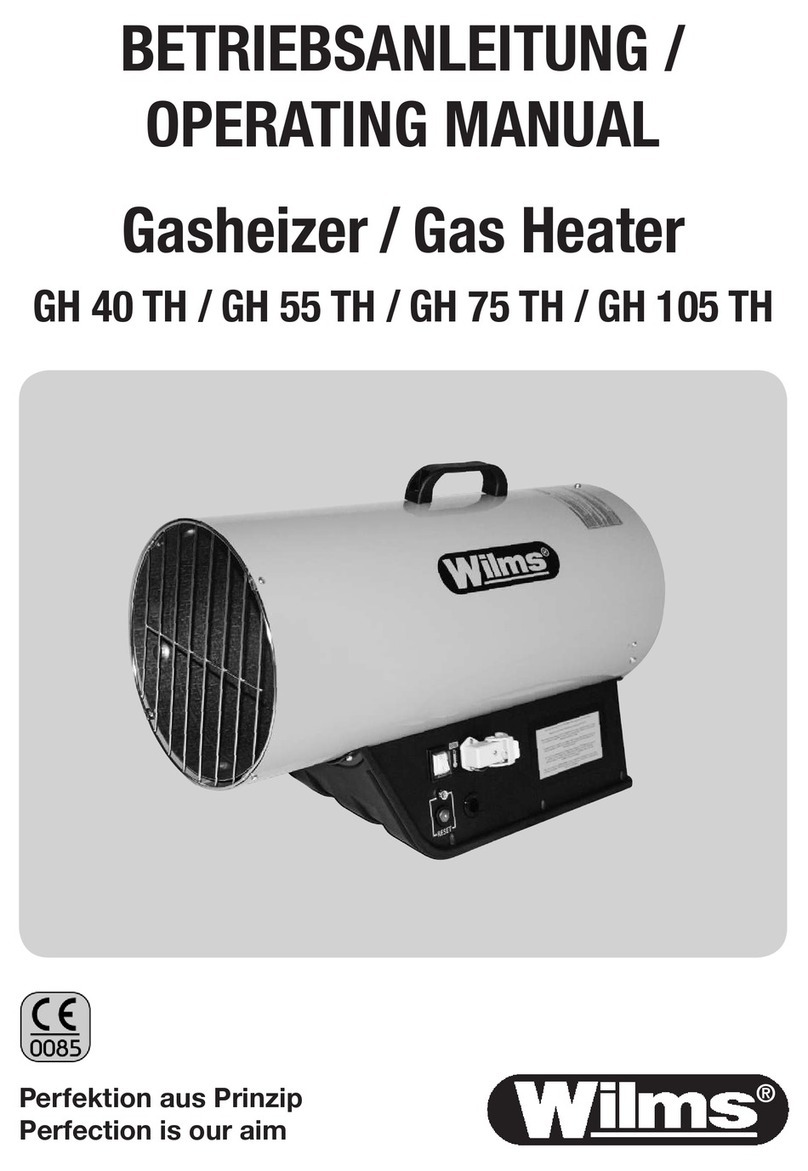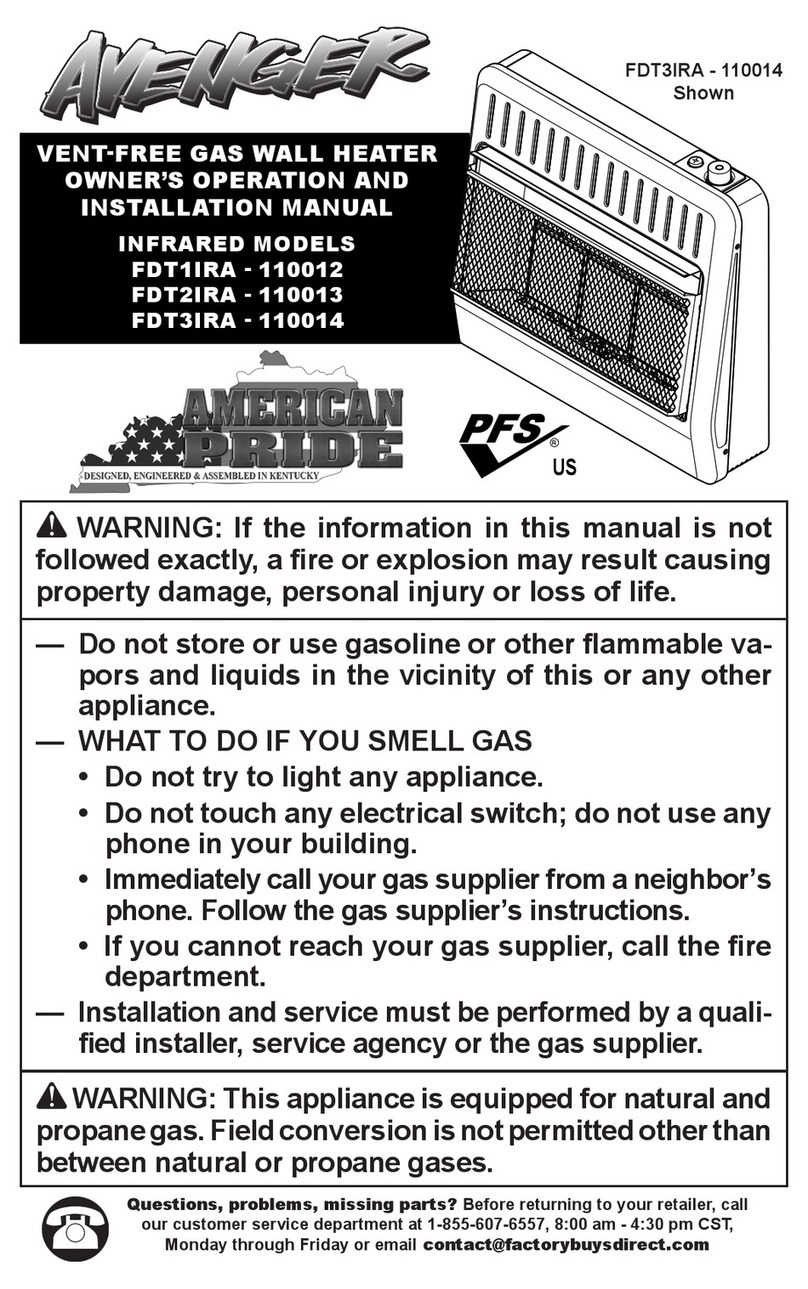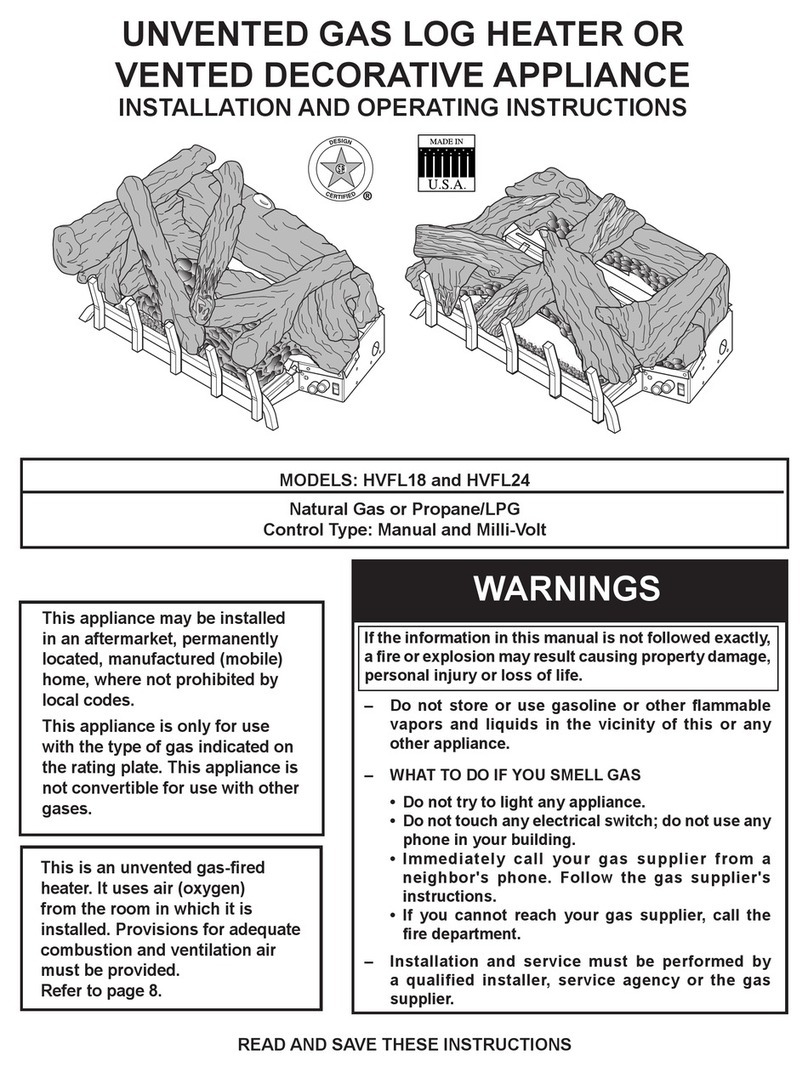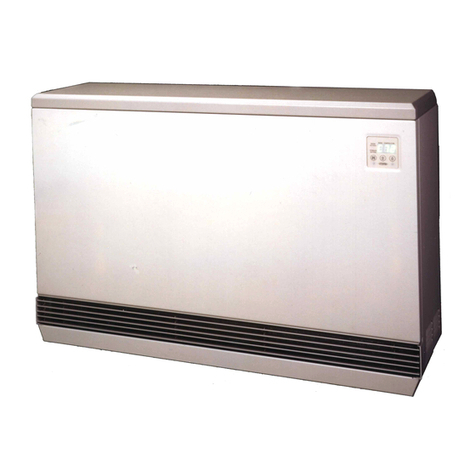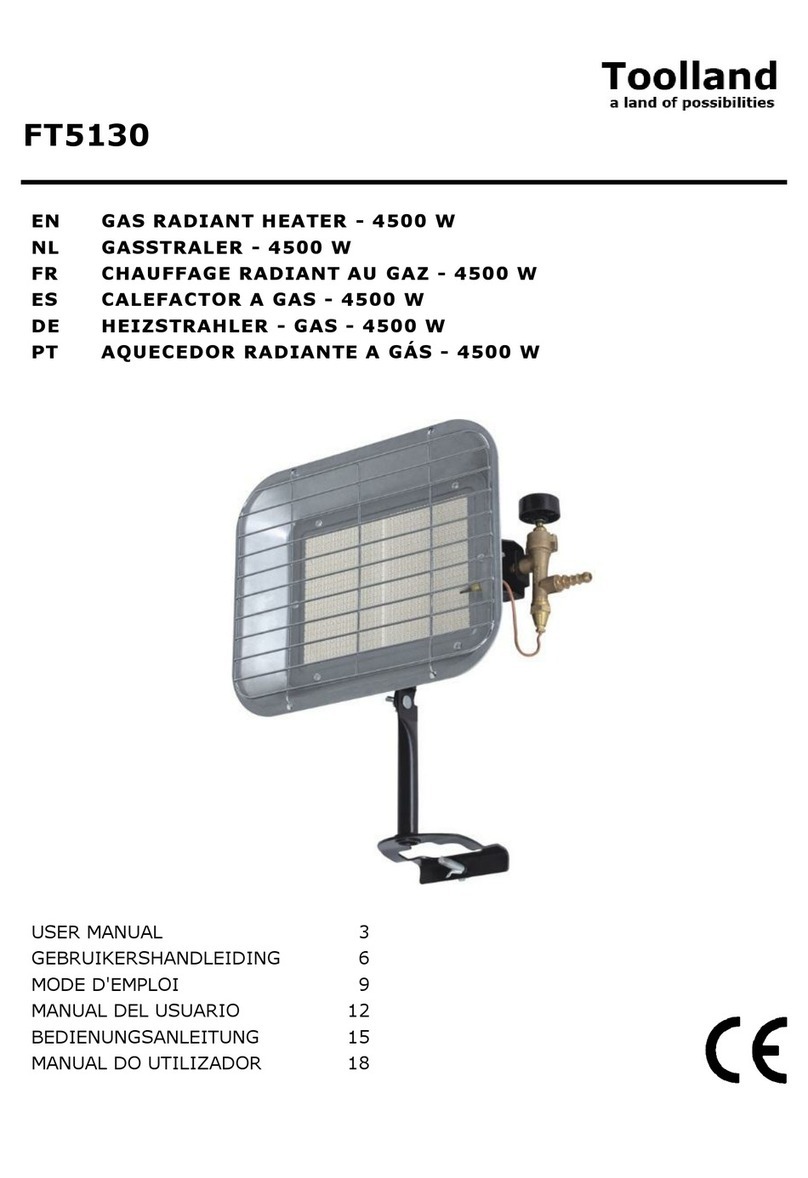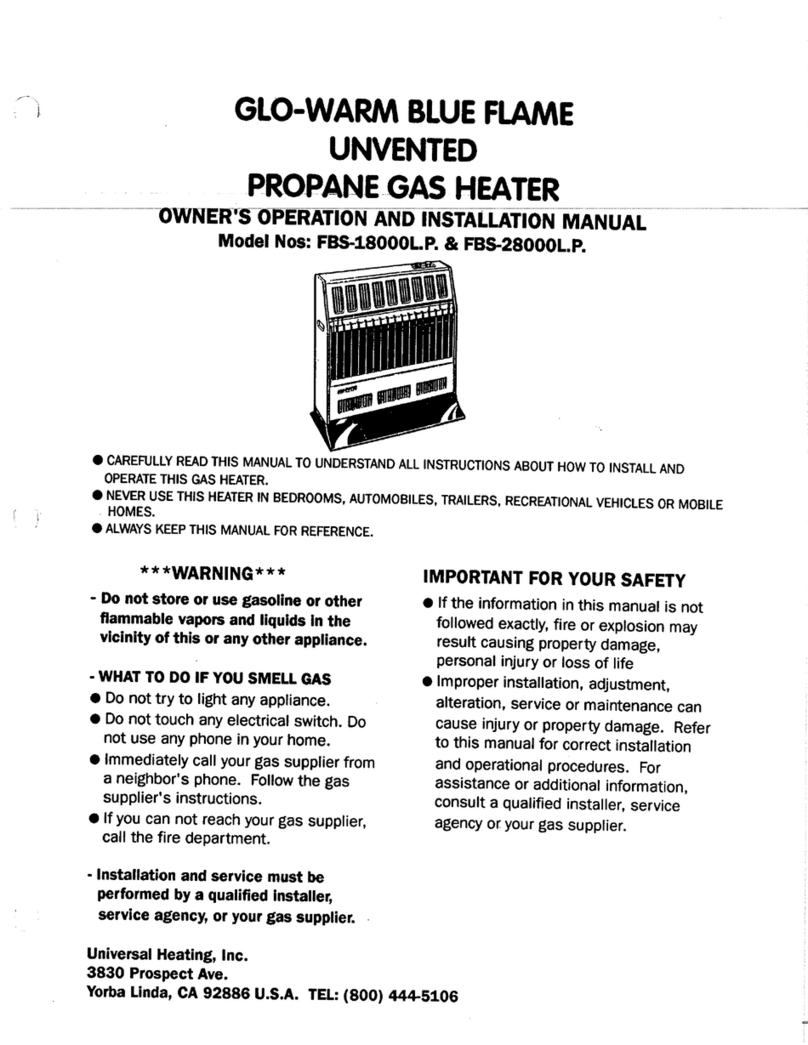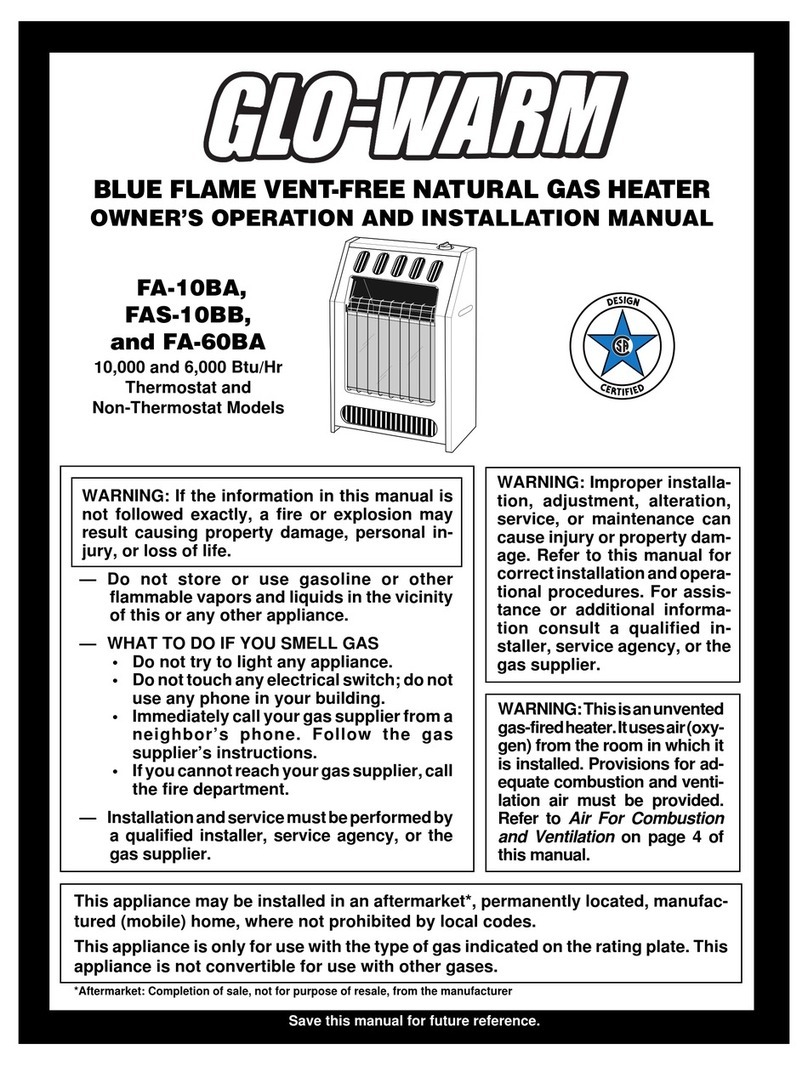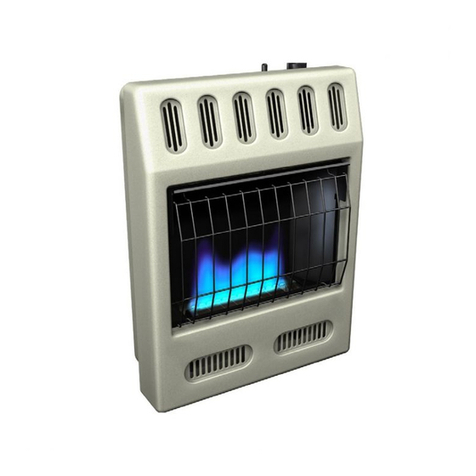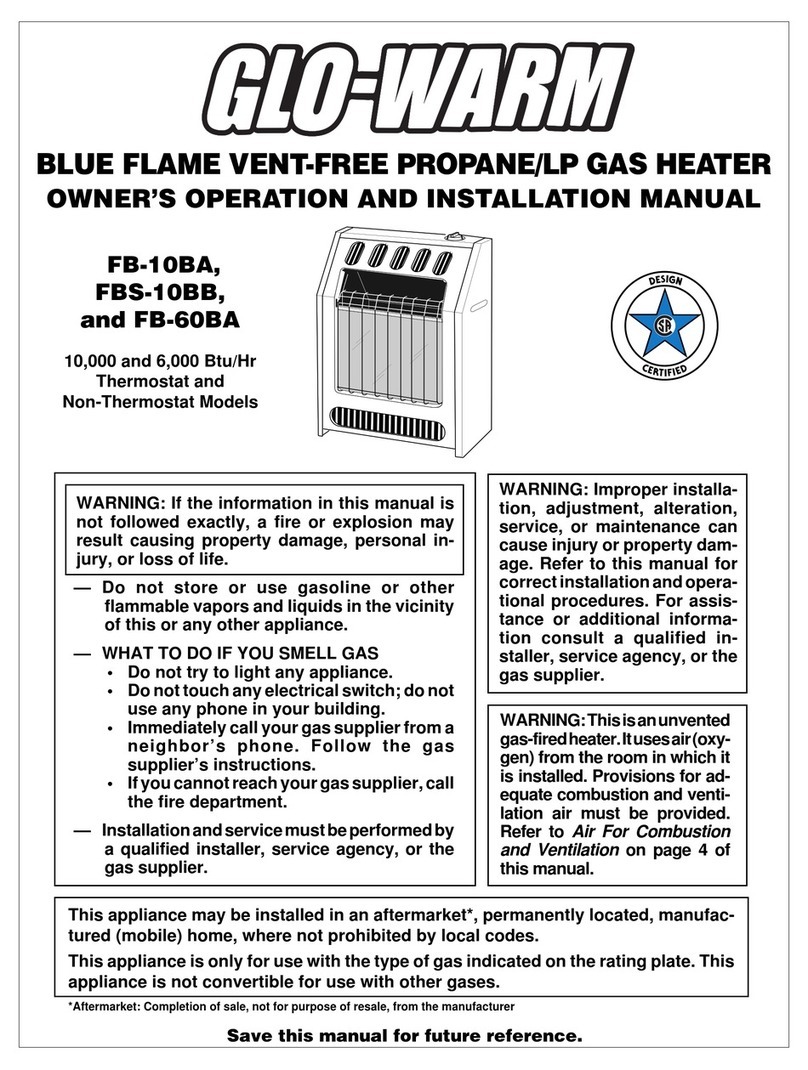
12
105565
PROPANE/LP GAS HEATER
THERMOSTAT MODEL FBS-10BA
FOR YOUR SAFETY
READ BEFORE
LIGHTING
A. Thisappliancehas apilotwhich must
belighted byhand.When lightingthe
pilot,followtheseinstructionsexactly.
B. BEFORE LIGHTING smell all
aroundtheappliancearea forgas. Be
suretosmellnexttothe floorbecause
some gas is heavier than air and will
settle on the floor.
WHAT TO DO IF YOU SMELL
GAS
• Do not try to light any appliance.
• Donottouchany electricswitch; do
notuseany phone in yourbuilding.
• Immediatelycall yourgassupplier
from a neighbor’s phone. Follow
the gas supplier’s instructions.
• If you cannot reach your gas sup-
plier, call the fire department.
C. Useonlyyourhandto pushinor turn
thegascontrol knob. Neveruse tools.
If the knob will not push in or turn
by hand, don’t try to repair it, call a
qualified service technician or gas
supplier. Force or attempted repair
may result in a fire or explosion.
D. Do not use this appliance if any part
hasbeenunderwater.Immediatelycall
aqualifiedservicetechniciantoinspect
the appliance and to replace any part
of the control system and any gas con-
trol which has been under water.
WARNING: If you do not fol-
low these instructions exactly, a
fireorexplosionmayresultcaus-
ing property damage, personal
injury or loss of life.
LIGHTING
INSTRUCTIONS
1. STOP! Read the safety information,
column 1.
2. Make sure manual shutoff valve is
fully open.
3. Push in controlknobslightlyandturn
clockwise to the OFF position
(see Figure 18). Be sure that the tem-
perature setting knob is set at the line
between level 1 and level 7.
4. Wait five minutes to clear out any
gas. Then smell for gas, including
near the floor. If you smell gas,
STOP! Follow “B” in the safety in-
formation in column 1. If you don’t
smell gas, go to the next step.
5. Push in and turn control knob coun-
terclockwise to PILOT po-
sition. Press in control knob for
five(5) seconds.
Note:
You may be running this
heater for the first time after hook-
ing up to gas supply. If so, you may
need to press in control knob for 30
seconds. This will allow air to bleed
from the gas system.
6. Release downward pressure on con-
trol knob and turn clockwise
to OFF position.
7. Pressin controlknob and turn coun-
terclockwise past IGN to
PILOT (see Figure 18). This will
cause the piezo ignitor to spark and
lightthepilotgas.Keepcontrolknob
depressed for 10 seconds before re-
leasing. If needed, repeat steps 5
through 7 until pilot lights.
Figure 18 - Dual Control for Thermostat
Model FBS-10BA
Figure 19 - Pilot
Ignitor Electrode Pilot
Burner
Thermocouple
OPERATING
HEATER
Continued
OFF
ON
PILOT
IGN
1
7
3
5
4
6
2
TO TURN OFF GAS TO
APPLIANCE
Shutting Off Heater
1. Turncontrolknob clockwise
to the OFF position.
2. Turn off all electric power to the ap-
pliance if service is to be performed.
Shutting Off Burner Only (pilot
stays lit)
Turn control knob clockwise to
the PILOT position.
THERMOSTAT
CONTROL
OPERATION
The thermostatic control used on this
model differs from standard thermo-
stats.Standardthermostatssimply turn
on and off the burner. The thermostat
usedonthisheater senses the room tem-
perature. At times the room may exceed
the set temperature. If so, the burner
will shut off. The burner will cycle back
onwhenroomtemperaturedropsbelow
the set temperature. The control knob
canbesettoanycomfortlevelbetween1
and 7.
Note:
Thethermostatsensingbulbmea-
sures the temperature of air near the
heater cabinet. This may not always
agree with room temperature (depend-
ingonhousingconstruction,installation
location, room size, open air tempera-
tures, etc.) Frequent use of your heater
willlet youdetermineyourown comfort
levels.
Note:
If pilot does not stay lit, refer
to Troubleshooting, pages 14 through
16. Also contact a qualified service
person or gas supplier for repairs.
Untilrepairsaremade,lightpilotwith
match. To light pilot with match, see
Manual Lighting Procedure, page 13.
8 . When pilot is lit, turn the ignition
knob to ON position (see Figure 18).
9. To select desired heating level, turn
the temperature setting knob coun-
terclockwise between 1 and
7 (see Figure 18).




















